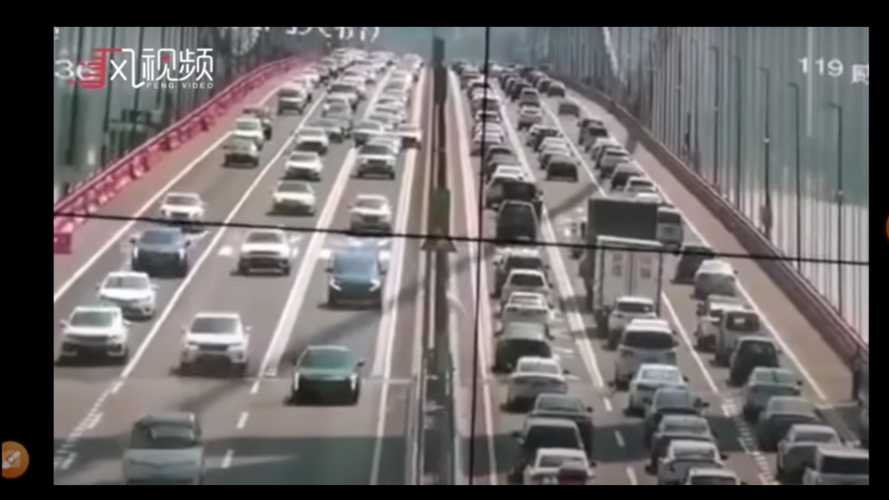Chinese Bridge Waving Is Like A Scene From Final Destination

Imagine you're on your daily commute, driving to work or dropping your kids off at school. Your route always consisted of passing over a long bridge that takes you over a wide river, and you've never really given it any thought. In the back of your mind, however, we're pretty sure that there's some subconscious fear that something could go wrong during your short time crossing the bridge. It doesn't help that it's rush hour, and there is practically nowhere to go if something did happen, and a mad dash to the other side would definitely end badly for anyone involved. Well, that fear became a reality for many drivers in Guangdong province in China, as the bridge they were driving on started to wave up and down.
The suspension bridge in question spans the Pearl River and measures about 2.25 miles from end to end. It connects the Nansha District of Guangzhou to Humen Town of Dongguan and was built in 1997. The incident happened on May 5 and was thankfully spotted by safety officials monitoring traffic cameras. The bridge was subsequently cleared and closed indefinitely until the problem could be solved. Now, Popular Mechanics picked up on this story and have given a more technical explanation as to why something like this happens. Engineers design bridges with allowances for flexing, just like a skyscraper has to sway ever so slightly. Actually, most structures have a certain tolerance for swaying, but it's all kept to a minimum so that its imperceivable by anything but measurement equipment.
Suspension bridges, in particular, are very wind tolerant because they are more streamlined, providing little resistance to wind as possible. But, in the case of this particular bridge, a 1.2-meter tall retaining wall was installed on the bridge deck, effectively creating a huge sail. The wind passes over the wall and creates an air vacuum that actually pulls the surface of the bridge up and down, and the stronger the wind, the more the effect is amplified. Thankfully no one was hurt, and plans to tear down the retaining wall are underway. Whether or not people will start using the bridge again after is another question.
Related News


